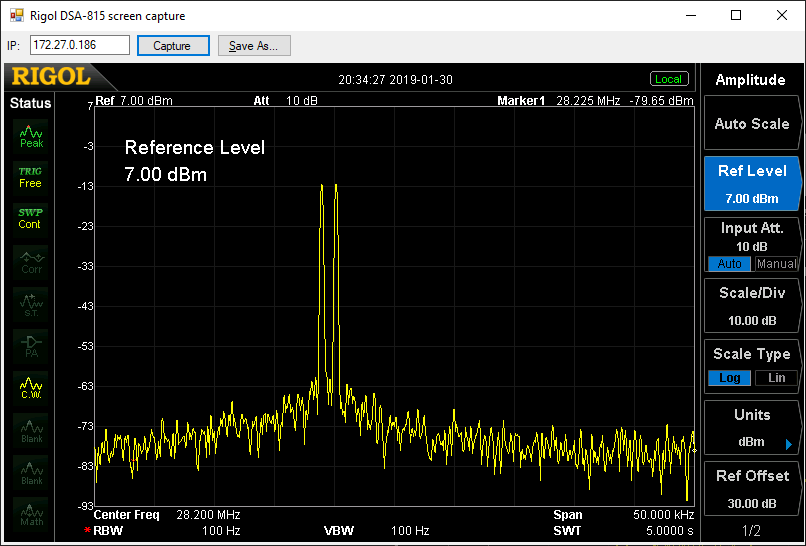

For some years, there's been a lack of any very good VHF / UHF multi-mode radios available in the amateur market. Plenty of rigs will "do" 2m or 70cm SSB, but if you're intending to use them as part of a moderately serious station, they tend to be lacking, either in cleanliness of the transmitted signal, or the ability to cope with very strong signals from other stations while being able to receive a much weaker signal.
It's certainly a challenge: as DF9IC wrote, to cope with the very strongest stations on receive requires handling signals 130dB above the noise floor, which represents an amazing dynamic range. Nothing that I'm aware of meets that requirement, but worse, the best radios on the market today are still inferior to those produced some decades ago. The state of the art should not have regressed.
My own drive for improved performance comes from contesting with G3PYE/P: our normal portable location is less than 10km from several active amateurs, and we have close to line of sight between our antennas. Any imperfections in one of our transmitted signals can bring misery to everyone else.
The most common option for good V/UHF performance now seems to be a transverter. This uses a good HF transceiver to produce an intermediate frequency signal, often on 28MHz, and increases that, linearly, to the wanted operating frequency - 144 or 432MHz, for example.
There are now a number of HF radios with excellent performance from nearly all the major manufacturers: Elecraft's K3, Icom's IC-7300 or IC-7610, Flex's 6700, and Kenwood's TS-590 or TS-890. These all have very clean transmitted signals and handle equally strong signals on receive.
But which transverter to add to that? There's now a few on the market for 70cm:
Costs vary hugely from less than $50 to in excess of $1000. But does the performance match the price?
A disclaimer: I'm not an RF engineer. I have some basic test equipment, and the benefit of a few friends who are much smarter than me who've been kind enough to share some of their knowledge. Any mistakes are entirely mine. Some of the results below might be limitations in my test setup, though I believe the comparative results are likely to hold true.
IF: Elecraft K3, serial #6167, with new KSYN3A synthesisers. 28MHz at <=1mW out from transverter output, either constant carrier or 2-tone test using internal generator.
Spectrum analyser: Rigol DSA-815TG with 30dB attenuator (entered as ref offset, so dBm values shown should be reasonably accurate).

I originally purchased this as a kit in 2013, before the launch of the G4DDK Iceni, but took some years to actually complete it. It produces a nominal 25W out, though tends to get rather less linear as you approach that.
Wide sweep:

Nothing noteworthy. Wanted signal in the right place, and nothing else visible.
IMD3 (a good indication of how linear the device is):

Acceptable (at about 10W output), -27dB relative to each tone. Though I'd still file under "could try harder": here's the IF signal at 28MHz for comparison:

Here, there's nothing visible at all apart from the two wanted carriers. Remember this is from the 1mW transverter output of the K3: doing the same test at 100W would not be anywhere near as good. If your radio does have a dedicated transverter output, use it if possible!
I bought this from their eBay shop purely on the grounds of price and curiosity. It claims 3-4.5W out, but 1mW drive wasn't enough to achieve this, even with the output power adjustment at maximum.
Wide sweep (@0.5W output):

A little different to the DEMI! As well as the wanted signal at 432MHz, two other large peaks are visible. The lower one is at 404MHz, corresponding to the transverter's local oscillator, and the higher at 460MHz, corresponding to the LO plus twice the IF. Both of these are due to inadequate filtering: the DEMI uses helical filters with a very narrow bandwidth, but these aren't cheap.
(There's also a smaller peak at 429MHz. I'm not sure where this came from, and I couldn't reproduce it in a later test, so it can probably be ignored.)
Looking at absolute levels, how much of a problem are these unwanted signals likely to be? Using the transverter on its own, the 460MHz signal is around 4mW, which probably won't go too far on a small antenna. But if you combine this transverter with a linear amplifier to achieve the UK legal limit of 400W for the wanted carrier, the unwanted one is suddenly in excess of a watt, well outside the amateur bands and in Business Radio territory. This carries a definite risk of making you unpopular with your RF neighbours!
IMD3 @ supplied output level:

Here, the unwanted third-order intermod products (shown at marker 1) are less than 22dB down on the wanted tones - nearly four times stronger than on the DEMI. There are also a lot more higher-order tones visible.
Reducing the output power considerably does improve the linearity a lot, but at this point, the output power is only a few milliwatts:

At this lower output power, the LO and LO+2IF leakage is still present, at a similar relative level:

As a toy transverter to start playing a bit on 70cm, it's probably usable, but clearly the much lower price requires cutting some corners.
I have an Iceni kit from Sam, G4DDK, still to build, and I'll repeat these tests on that. Sadly I can't quite justify the >$1000 cost of the Kuhne transverter, so that will probably remain a gap!
Another aspect of performance that would be interesting to compare is phase noise: aside from the intermodulation products, how much unwanted signal is produced in-band, but further away from the wanted signal? I don't have a good way of measuring that at ~100kHz spacing, but if somebody can suggest one, I'd be happy to try.
comments powered by Disqus